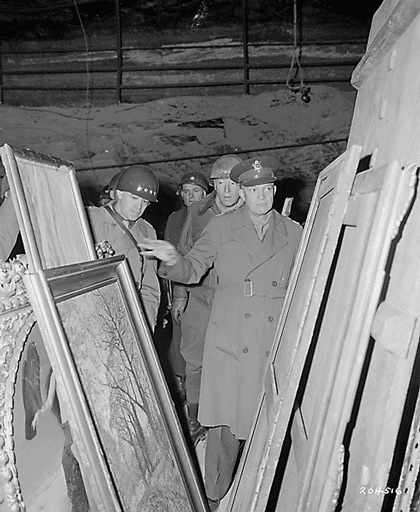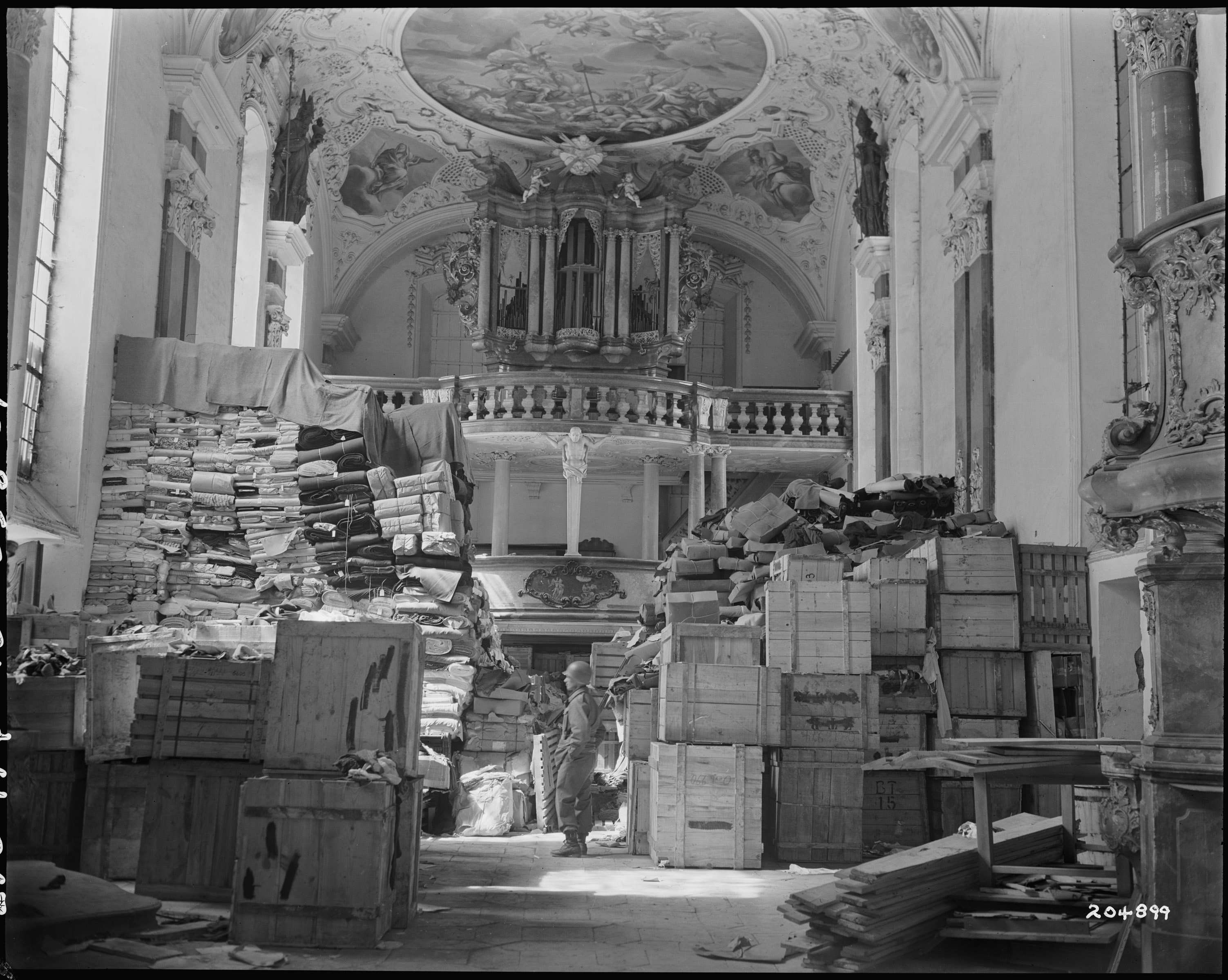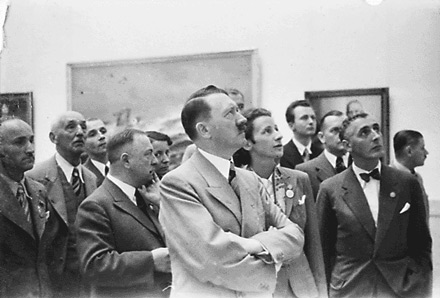
Documenting Nazi Plunder of European Art
By Greg Bradsher
NARA's Assistant Chief, Archives II Texual Reference Branch
The Record, November 1997
During and after World War II the United States Government, in part, through the Safehaven Program to identify, recover, and restitute Nazi looted assets, expended considerable resources on the looted art issue. It was a big issue, given the fact that upwards 20% of the art of Europe was looted by the Nazis. The American Commission for the Protection and Salvage of Artistic and Historic Monuments in War Areas (The Robert Commission), the U.S. Army's intelligence unites and Monuments, Fine Arts, and Archives officers, the Office of Strategic Services' Art Looting Unit, and State Department Foreign Service officers, among others, were engaged in efforts to identify, recover, and restitute looted art works.
Much looted art was recovered and restituted. However, despite the efforts of the American and other governments, many thousands of pieces of art were never recovered by their rightful owners. As late as 1994, 16 of the 40 top paintings were still missing. This past March, Philip Saunders, editor of Trace, the stolen art register, stated that "there are at least 100,000 works of art still missing from the Nazi occupation."
Fifty years later, as questions abound Nazi looted assets that were never recovered, interest in the looted art has been rekindled. In August 1997, the National Jewish Museum established a Holocaust Art Restitution Project, and in September the World Jewish Congress began exploring the possibilities of establishing a similar project. At a National Jewish Museum-sponsored conference held in Washington, DC, on September 4, 1997, one individual who spoke about his grandfather's Degas being taken noted that "information is at the crux of the problem." Much of the pertinent information resides in holdings of the National Archives, including the records of the agencies mentioned above as well as the Captured German records and the War Crimes records. As art sleuth Willi Korte was quoted in a New York newspaper in late August, "… in the National Archives…we have perhaps the most important collection of records which can easily be used to form a very solid foundation for such a project," referring to the Holocaust Art Restitution Project.
Indeed, the National Archives at College Park has a substantial quantity of records pertaining to Nazi looted art. These records range from thousands of intelligence reports to over 12,000 still photographs accumulated by the Roberts Commission. As always the Archives staff at College Park stands by to assist researchers in their quest for information about the looted art.
The Finding Aid: You may access the Finding Aid to Records at the National Archives at College Park at the Department of State's World Wide Web site. The finding aid is the appendix to the Interagency Group on Nazi Assets' Preliminary Study on U.S. and Allied Efforts To Recover and Restore Gold and Other Assets Stolen or Hidden by Germany During World War II. Both the study and the finding aid are available in a PDF format. A link to a free PDF reader is provided at the Department of State Web site.
This article appears in the November 1997 edition of The Record. To be placed on the mailing list for this free newsletter, please contact Roger Bruns of the NARA Policy and Communications Staff at 202-357-5482, ext. 257 or send your request to inquire@nara.gov.
The photographs used in this article are from the records series: Signal Corps Photographs of American Military Activity; Records of the Office of the Chief Signal Officer, Record Group 111. These images are available from the Still Picture Branch at the National Archives at College Park, MD. A description of this records series is available in the National Archives Catalog.
 U.S. Soldiers examine Edouard Manet s In the Conservatory, April 25, 1945 (NARA #SC-203453-S)
U.S. Soldiers examine Edouard Manet s In the Conservatory, April 25, 1945 (NARA #SC-203453-S) General Dwight D. Eisenhower, Supreme Allied Commander, accompanied by General Omar Bradley and Lt. Gen. George Patton, Jr., inspects stolen art treasures (NARA #SC- 204516)
General Dwight D. Eisenhower, Supreme Allied Commander, accompanied by General Omar Bradley and Lt. Gen. George Patton, Jr., inspects stolen art treasures (NARA #SC- 204516) 
 The Fuhrer at the Haus of German Art, Munich (NARA, RG 242, Collection of Foriegn Records Seized, #HLB/2009)
The Fuhrer at the Haus of German Art, Munich (NARA, RG 242, Collection of Foriegn Records Seized, #HLB/2009)  Hermann Goering s art collection, stolen from museums across Europe, is stored temporarily in building near Berchtesgaden while being catalogued, June 9, 1945. (NARA #111-SC-207820)
Hermann Goering s art collection, stolen from museums across Europe, is stored temporarily in building near Berchtesgaden while being catalogued, June 9, 1945. (NARA #111-SC-207820)